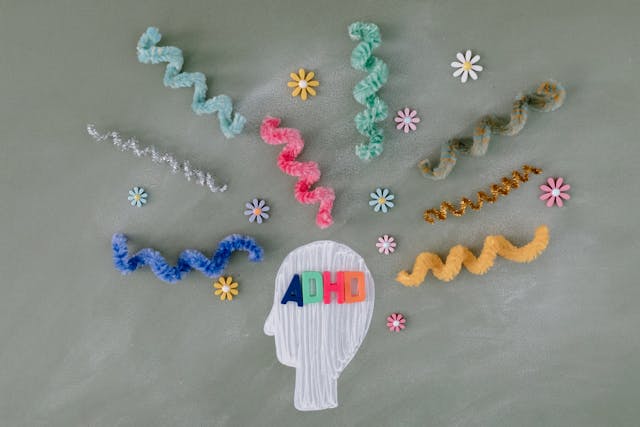ADHD is often associated with children, but research shows that its symptoms persist into adulthood in a significant proportion of cases. ADHD in adults can interfere with work performance, relationships, and overall well-being. Although ADHD is common, many adults still go undiagnosed due to the misconception that ADHD is primarily a childhood disorder. This lack of diagnosis leads to untreated symptoms that can contribute to anxiety, depression and difficulties in daily functioning.
This article attempts to bridge this gap in understanding by shedding light on ADHD in adults and providing strategies for adults with ADHD. It provides readers with a thorough overview of the condition, discusses practical strategies to improve daily functioning, and explores the latest developments in treatment options. By providing actionable advice and evidence-based insights, this guide aims to empower individuals to manage ADHD and improve their quality of life.
Statistics of ADHD in adults
To understand the extent of ADHD in adults, we need to look at the numbers:
- Prevalence figures: Research shows that approximately 4.4% of American adults are currently diagnosed with ADHD. The lifetime prevalence among adults is estimated at 8.1%. These statistics highlight that ADHD is not just a childhood condition, but is a lifelong challenge for many people.
- Gender Differences: Men are diagnosed with ADHD more often than women, with a prevalence of 5.4% and 3.2% respectively. This discrepancy may be due to differences in the way symptoms manifest or are perceived between genders.
- Ethnic and racial differences: Non-Hispanic white adults report higher rates of ADHD diagnoses compared to other racial or ethnic groups. This finding underlines the need for equal access to diagnostic tools and resources for different populations.
These statistics highlight the widespread nature of ADHD in adults and the importance of targeted interventions to address this often overlooked condition.
Like Dr. Alexander Sidawi of Analysis Psych notes: “By understanding the prevalence and disparities in ADHD diagnoses, we can better advocate for inclusive, accessible care that is tailored to individual needs.” For more insights on ADHD in adults and effective treatments, visit his website at Analyze psychiatry.
Typical symptoms in adults
The symptoms of ADHD in adults are divided into three main areas: inattention, hyperactivity, and impulsivity. Although these symptoms are similar to those in children, they manifest differently in adults.
Inattention
Adults with inattention often struggle with:
- Task Completion: Starting tasks but leaving them unfinished.
- Focus: Difficulty maintaining concentration at work, especially if the task is repetitive or does not provide an immediate reward.
- Organization: Challenges in managing schedules, keeping track of deadlines and prioritizing responsibilities.
Hyperactivity
Hyperactivity in adults may be less obvious than in children but may include:
- Restlessness: Feeling a constant need to move or fidget.
- Over-involvement: Taking on too many responsibilities due to the inability to slow down.
- Difficulty relaxing: Feeling uncomfortable during downtime or activities designed to relax.
Impulsiveness
Impulsiveness can lead to:
- Interruptions: Often speaking out of turn or interrupting conversations.
- Hasty decisions: Making choices without fully considering the consequences, which can affect relationships and finances.
- Emotional reactivity: Experiencing sudden mood swings or difficulty regulating emotions in stressful situations.
Recognizing these symptoms is the first step toward seeking appropriate treatment and support for adults with ADHD.
Living with ADHD: coping strategies
Dealing effectively with ADHD involves implementing practical strategies to tackle daily challenges:
- Establish structured routines: Consistency helps reduce the distractions associated with ADHD. Set specific times for work, meals and play to create a predictable schedule.
- Use task management tools: Apps like Trello or Todoist can help organize tasks, prioritize and track progress.
- Practice mindfulness: Regular meditation or mindfulness exercises can improve focus and emotional regulation. These practices help individuals become more aware of their thoughts and reactions, reducing impulsive behavior.
- Engage in regular exercise: Physical activity increases dopamine levels, which can improve focus and reduce symptoms of inattention and hyperactivity.
- Communicate openly: Share problems and needs with employers, family and friends. Building a support network ensures understanding and adjustments when necessary.
These strategies, in combination with professional guidance, can significantly improve the daily functioning and quality of life of adults with ADHD.
Treatments for ADHD
Several treatment options exist to control ADHD. These include pharmacological and non-pharmacological options. A multimodal approach often produces the best results, combining medication with therapy and lifestyle modification (ADHD).
Pharmacological treatments
- Stimulants: Medications such as methylphenidate (e.g., Ritalin) and amphetamines (e.g., Adderall) are commonly prescribed for ADHD. These drugs increase dopamine levels in the brain, improve focus and reduce impulsivity. However, possible side effects include loss of appetite, insomnia and anxiety.
- Non-stimulants: Alternatives such as atomoxetine (Strattera) and certain antidepressants provide relief for those who cannot tolerate stimulants. Although these medications carry less risk of dependence, their effects may take longer to become noticeable.
Non-pharmacological treatments
- Cognitive behavioral therapy (CBT): CBT helps individuals develop skills to manage symptoms, such as better organization and emotional regulation.
- Mindfulness-based therapy: Mindfulness exercises complement CBT by increasing attention and reducing stress.
- Psychoeducation: Educating individuals about ADHD promotes better self-awareness and equips them with tools to deal with challenges effectively.
| Overview Treatment type | Advantages | Limits |
| Stimulants | Fast symptom relief | Dependency risks |
| Non-stimulants | Suitable for people avoiding stimulants | Slower onset of action |
| CBT | Teaches essential coping skills | Requires commitment and effort |
Conclusion
ADHD in adults brings a unique set of challenges, often impacting work, relationships, and overall mental health. However, with greater awareness, practical strategies, and effective treatments, individuals can live fulfilling lives. From establishing structured routines to exploring advanced neurostimulation techniques, there are a range of options to manage symptoms and improve wellbeing.
Continued research and societal understanding are essential to ensure that adults with ADHD receive the support and resources they need. By addressing this condition holistically, individuals can unlock their potential and thrive in all aspects of life.





